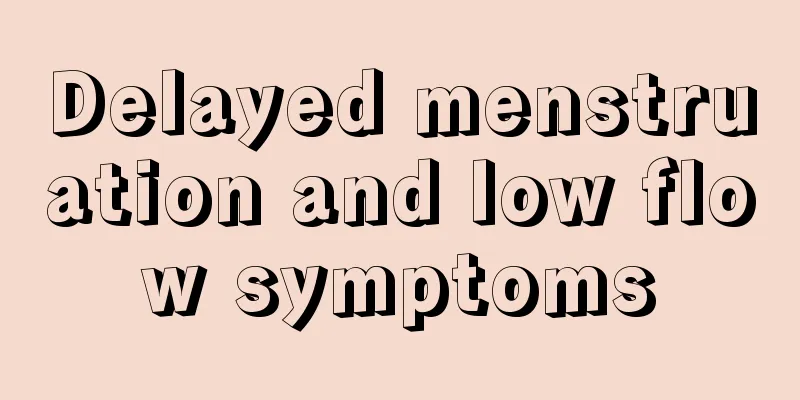Don’t be afraid of adenomyosis! There may still be hope of pregnancy

|
A couple worked hard together in Beijing after graduating from college. When they were young, they were afraid to have children because of the great pressure of life. The wife had 3 abortions. Not only did she not get pregnant again, but she also suffered from dysmenorrhea. Although the menstrual flow increased and the symptoms of dysmenorrhea became more and more severe, the wife thought it was not a serious illness and did not go to the hospital for treatment. It was not until the couple realized that they wanted a baby that they could not get pregnant, so they went to the hospital for examination. The doctor diagnosed the wife with infertility caused by adenomyosis, which was related to multiple artificial abortions. In the early stage of the disease, the wife only had menstrual pain, which gradually developed to pain before menstruation, and the menstrual flow increased, and the condition became more and more serious. Why is this? Dysmenorrhea and menstrual abnormalities are common manifestations of adenomyosis, but there is actually a more serious hazard - infertility. Such patients will have adhesions in the pelvic cavity and uterine hypertrophy, which is not conducive to embryo implantation and ovulation, thus significantly reducing the success rate of pregnancy. Fortunately, severe adenomyosis is not common in young women, and if the condition is mild, there is still a chance of pregnancy. The following conditions may lead to infertility due to adenomyosis: Abnormalities in the structure and function of the uterine myometrium: Thickening of the myometrium in adenomyosis can cause abnormal anatomical morphology in the uterine cavity and impair the transmission function of the uterine fallopian tubes, leading to a decrease in natural conception and IVF pregnancy rates. Enlarged uterus, dysfunction of the junctional zone, faster frequency of cervical-fundal peristaltic waves, enhanced peristalsis, and impaired normal rhythmic contraction of the uterus can interfere with gamete transport and embryo implantation. Changes in endometrial receptivity: In adenomyosis, the expression of endometrial receptivity-associated protein homeobox gene and leukocyte inhibitory factor gene is reduced, local hormone metabolism changes in adenomyosis lesions, relative increase in estrogen and relative deficiency of progesterone reduce endometrial receptivity, make endometrial development asynchronous with the embryo, affect decidualization, and thus affect embryo implantation and reduce pregnancy rate. Uterine local inflammation and immune dysfunction: The balance between reactive oxygen and antioxidant in the endometrium of patients with adenomyosis is disrupted, oxygen free radicals increase, damage sperm and fertilized eggs, inhibit embryonic development and pregnancy maintenance. Abnormal local cellular immunity and humoral immunity in patients with adenomyosis lead to a vicious cycle of endometrial immunity. Overactivation of the immune system, increased expression of cell surface antigens and adhesion molecules, increased macrophages, cytokines and immunoglobulins, especially autoantibodies can lead to early embryo implantation disorders and miscarriage. Treatments for adenomyosis aimed at preserving and improving female fertility include assisted reproductive technology, lesion resection surgery, drug therapy, surgery combined with drug therapy, triple therapy (surgery combined with drug therapy and assisted reproductive technology), high-intensity focused ultrasound therapy, etc. The choice of the above treatment methods should be based on the patient's uterine volume, the location and nature of the lesion (focal or diffuse), the patient's ovarian reserve function, and whether there are other infertility factors. In summary, it is still a challenge to determine whether adenomyosis is the only cause of infertility, because adenomyosis is not a single disease in clinical practice and may be affected by endometriosis. For adenomyosis combined with infertility, reproductive doctors need to work together with gynecologists and obstetricians to develop individualized treatment for patients. |
<<: Burn more fat? Be healthier? Which one should you choose: outdoor running or running in the gym?
Recommend
Will mild cervical erosion affect fertility?
Cervical erosion is a gynecological disease that ...
What are some methods for women to warm their uterus and lose weight?
The reason why many women experience obvious dysm...
Is rice a carbohydrate? What are carbohydrates?
Carbohydrates are the main components of the stru...
What should I do if my boyfriend wants to have sex with me every morning and evening? My boyfriend can't handle it every day. Can I refuse?
Sex is a vital part of a relationship. A relation...
How to reduce breast size safely?
Having too big breasts is a problem for some wome...
What to do if your uterus shrinks
Estrogen is a particularly important hormone in t...
What to check before pregnancy
The best time to have a pre-pregnancy check-up is...
Painless abortion procedure
Pregnant women who can no longer continue their p...
My armpits and neck have turned darker during pregnancy
Many people will experience various changes in th...
What is the normal range of blood pressure for women?
When women feel unwell, they should first undergo...
What causes dizziness when standing up? Or these factors are to blame
Many women often experience this symptom, that is...
Do you know why women's private parts are sour?
The skin and mucous membranes of the female priva...
What are the disadvantages of drinking green tea for women?
Tea is very common in our country. In ancient tim...
Good things should be shared, can medicine be shared as well?
【Pharmacist consultation clinic】 Patient: "I...
The rights and wrongs of "white people's rice"
Recently, "white people's rice" has...









